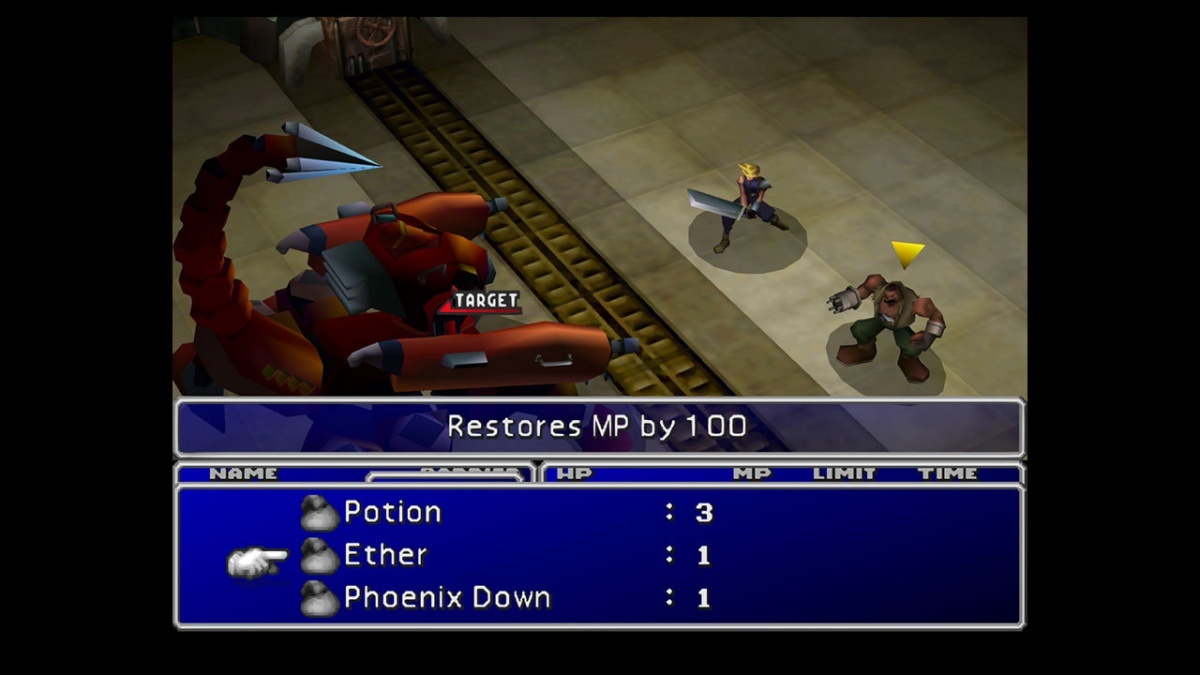Final Fantasy VII (PlayStation 4) Review
By Shane Jury  03.02.2016
03.02.2016

One series that Nintendo touted as a staple of its line-up throughout the nineties was SquareSoft's (now Square Enix) Final Fantasy - six character-driven adventure role-playing games that would continue to push presentational boundaries with each iteration. After the critically-acclaimed Final Fantasy VI, many expected the seventh game in the series for the upcoming Ultra 64, a machine that promised cutting-edge 3D visuals and powerful hardware. Alas, it was not to be, and the next title would mark a major coup for Sony's PlayStation and a turning point in Nintendo's gaming market dominance. Now, nearly two decades later, Square Enix has updated the classic for PS4, and ahead of the impending remake, Final Fantasy VII has once again graced the PlayStation community. How does the game hold up after 19 years of industry innovation and development?
Final Fantasy VII tells the tale of Cloud Strife, a cold-hearted mercenary hired by the eco-terrorist group AVALANCHE to aid in taking down the dictatorial rule of Shinra, a power-hungry corporation looking to achieve world dominance. Via highly detailed static backdrops, impressive cut-scene videos, and a vast array of memorable characters used throughout the entirety of the game, Cloud's journey of discovery, redemption, and revenge against a former ally-turned-harbinger of death and destruction unfolds at a steady and solid pace.

The world of Gaia opens up at a pivotal moment in the story and makes for one of the biggest explorable landmasses seen up to the point of the game's original release. A certain moment in the story that has since become widely praised for shocking and tear-inducing its audience still has equal impact today, and has arguably yet to be bettered in sheer surprise value. Although the lesser polygonal-rendering ability of the PlayStation was distractingly apparent in the blocky "LEGO men" look of the characters outside of battle transitions and cut-scenes, the animations used to effectively convey a whole host of emotions and reactions in conversational situations installs a strong sense of charm that would likely have been less apparent in more realistic models.
The game is presented in the original 4:3 aspect ratio, and has been primarily converted from the PC version, so character models and backgrounds have been sharpened for high-definition displays. Cut-scenes have been given a similar enhancement, although the cranky animation does more to show the game's age than the visual look itself. The music is kept in line with the initial release, and remains some of Nobuo Uematsu's finest work, with only a minor glitch carried over from the PC being a fault; overworld music resets after random battles, instead of continuing.

At the core of Final Fantasy VII is the battlefield and the role-playing elements surrounding it: Hit Points and Magic Points to determine health and casting ability, respectively; a Limit Break meter to unleash a strong attack when damaged enough; a levelling system that upgrades fighters and powers upon successful tussles; plenty of weapons and armour to obtain and learn to use; and the more unique Materia system that arguably has yet to find a rival in accessibility and flexibility.
Materia is essentially what the game's premise and events unfold around, and it takes the shape of countless elemental jewels that bestow their wielders the powers of the planet. In battle, this is in the form of magic spells, ranging from a simple earthquake or lightning bolt, to calling down individual Summon creatures that deliver a strong blow. Outside of battle, how characters can arrange these abilities is related not only to the level of the Materia itself, but the currently equipped weaponry. Many Materia work in tandem with each other via linked weapon slots, and learning how best to make use of each one is the key to progression. There were many tricks and glitches in the original game ripe for exploitation in this system, and Square Enix has left them all in, be it for the fans that once enjoyed them or just for the authentic retro feel.

Speaking of tricks, a brand new addition to this version is the three cheat modes, activated and switched off by pushing R3, L3, or a combination of the two. One will speed up the entire game by three times, which is a very handy function that helps with the game's authentically low frame rate speed and doesn't affect the music or cut-scenes negatively. Another will switch off all random encounters; a very helpful one for getting from A to B without interruption. The third is akin to a "God Mode" of sorts; all health, magic and Limit meters are instantly restored while this function is kept on. Using any of these cheats doesn't affect Trophy gain at all, and can help iron out a number of the game's more aged aspects, while giving veterans a reason to revisit and enjoy anew.
One of the biggest reasons that Final Fantasy VII stood out back at release was the sheer amount of actual game there was to play; up until that era, the RPG genre was somewhat of a commodity, so this title was the first experience for many that actually felt like an interactive movie. As such, there is considerable depth and a vast amount to see across what was three discs of content. With the 3x speed option, seasoned fans will have no difficulty blasting through and grinding levels at key points, and completionists will have a blast going for the Trophies. The relatively low difficulty bar is a helpful element for those new to the genre, as well.

Cubed3 Rating
Exceptional - Gold Award

It is a year later than planned, but is more ironed out than any other version with the optional cheats and Trophies. A steadily-paced story, sterling soundtrack and unmatched character building system keep this title still relevant in the packed world of role-playing games. Whether it be for nostalgic purposes or simply to see what all the fuss is about, this edition of Final Fantasy VII is worthy of a fresh journey, and will surely compliment the impending remake nicely.

![]() 9/10
9/10
![]() 7/10
(1 Votes)
7/10
(1 Votes)
 Out now
Out now  Out now
Out now  Out now
Out now  Out now
Out now Comments
Comments are currently disabled

 Sign In
Sign In Game Details
Game Details Subscribe to this topic
Subscribe to this topic Features
Features






 Top
Top

